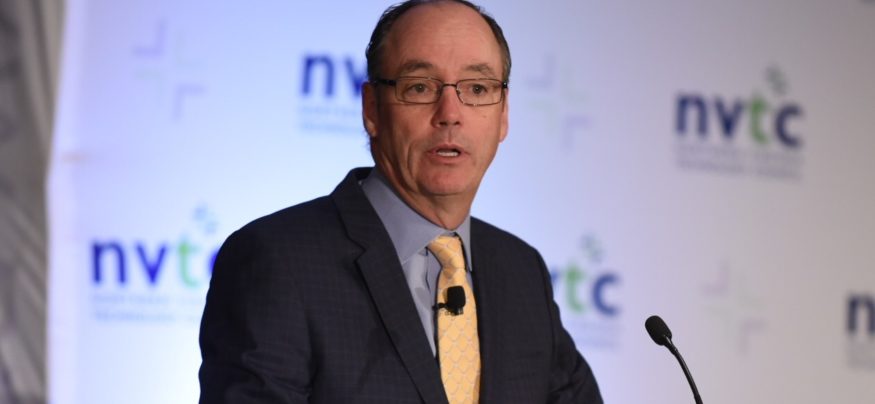I had the pleasure of attending this year’s Northern Virginia Technology Council Tech Titans breakfast, where hundreds of members of the D.C. area tech community gathered to discuss the future of 5G technology and networks.
Tim Baxter, president and CEO of Samsung Electronics North America, keynoted with Sowmyanarayan Sampath, senior vice president and chief product officer at Verizon, to bring to life what a world powered by 5G will look like. 5G will usher in things never before possible, enhancing both enterprise and consumer experiences across government, public safety and a wide range of other industries.
Samsung and Verizon have worked together closely to lead the development of 5G, culminating in Verizon’s announcement of a 5G commercial launch in four markets by the end of the year.
5G networks are driving mobile innovation in the form of connected solutions — from accelerating smart connectivity to providing massive bandwidth to driving advanced analytics, capabilities and experiences.
Federal government must take note because 5G isn’t just imminent in the future — it’s already here. “For years, we’ve talked about the convergence of all of this, and it’s actually happening now with 5G,” Baxter said. “We’ve lived in a world with discrete devices for discrete uses [like using a phone to make calls or a watch to tell time]. Now, the connection and new experiences enabled by 5G creates a connected experience across phones, cars, wearables and even cities.”
Digitize Your Government Agency
Get this guide to drive collaboration, boost productivity and ensure security in the public sector. Download Now
With artificial intelligence (AI), the Internet of Things (IoT), big data and mobility all being critical topics in the federal tech landscape, it’s important that agency leaders consider how 5G can enable these technologies and join them together to provide seamless connectivity.
“5G is going to enable a completely new industrial revolution by bridging the physical, digital and biological,” Sampath said. “You have all these silos with nanotechnologies. Now is the time to stitch all of that together to make it seamless in our lives. That’s what 5G does, it carries the data at the right speed and the right latency to make that stitch happen.”
There are a number of exciting use cases for government, ranging from mobile communications and geospatial functionality to increased situational awareness, collaboration in real-time and enhanced mission command and control for the military; smart military bases powered by 5G; new levels of military immersive training through augmented and virtual reality; faster insights for federal law enforcement to combat crime; and internet and video capabilities that can power telehealth — enabling the most vulnerable to have access to critical care.
“At the national scale, 5G is enabling opportunities like cloud-based training, remote operations, enhanced command and control, telehealth and drone delivery,” Baxter said.
For Samsung, pursuing 5G networks has been a multi-year journey. Initially, 2G was about putting the phone in the user’s pocket; 3G and 4G put the internet in the user’s pocket. Now, 5G will put the power of fiber optics in everyone’s pocket — homes, agencies and cities.
“It’s a future that’s beginning now,” Baxter concluded. “With 35 years of U.S. wireless innovation at Samsung — and 5G as the cornerstone of it all — we’re looking to power AI, connected cloud and all these critical enablers. This is a once-in-a-decade opportunity to revolutionize what we do and how we do it.”
Learn more about how 5G networks are enabling innovative technologies in the federal government.








